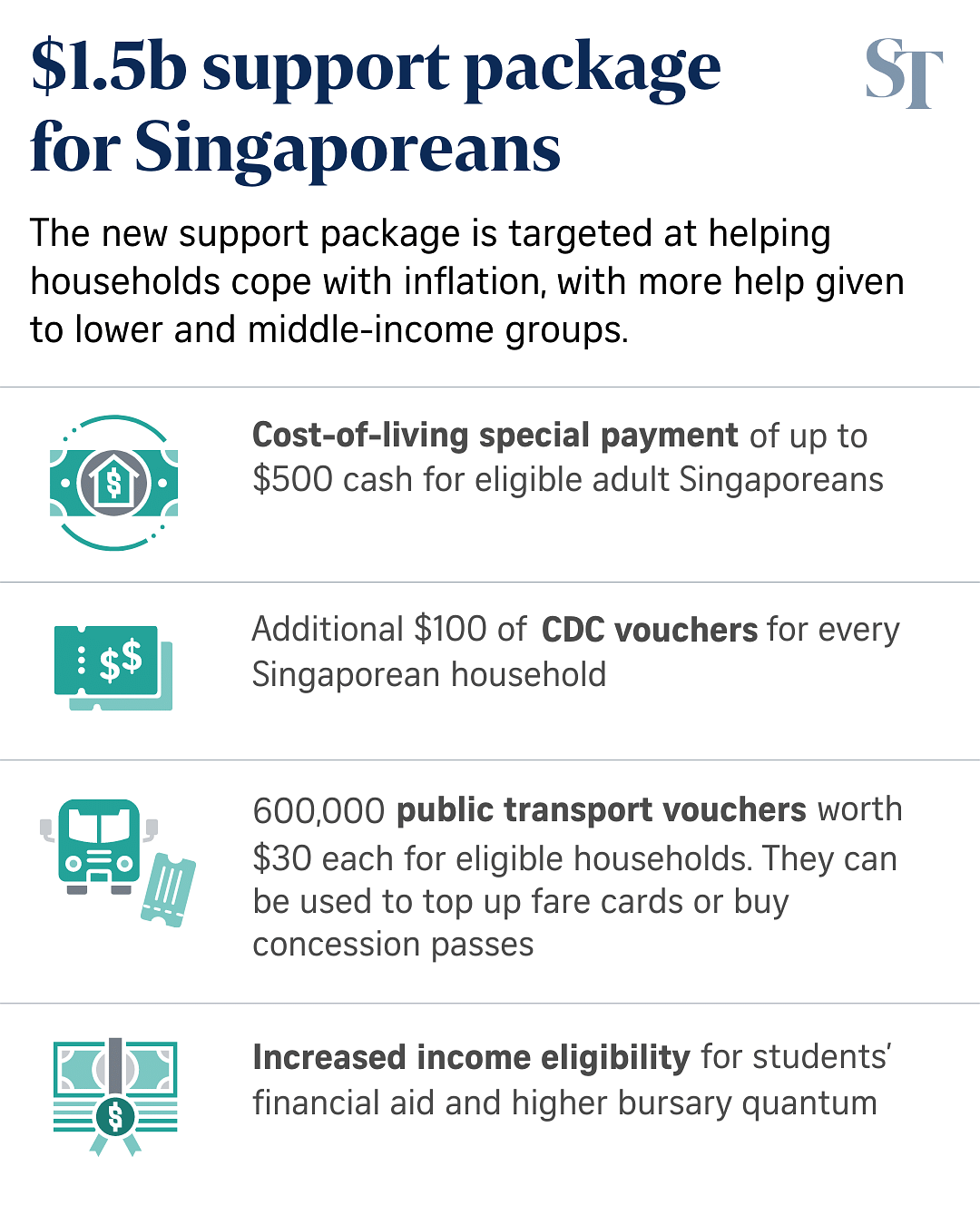SINGAPORE - The various cost of living support measures rolled out in 2022, including a new $1.5 billion package announced on Friday, will fully cover the effect of rising prices for the bottom 40 per cent of households and retiree households.
For households in the middle 20 per cent, more than half of their average expenditure increase will also be covered by the measures, according to estimates released in a Ministry of Finance (MOF) report on Friday.
These offsets will reduce the effect of inflation, which is around 6 per cent, by more than half, said the ministry.
In particular, those in the bottom 20 per cent will have more than 1½ times of their average projected expenditure increase covered by the cost-of-living support measures announced in 2022, according to the report.
The consumer price index (CPI) inflation for all items is expected to be around 6 per cent for 2022 while the Monetary Authority of Singapore core inflation is projected to average around 4 per cent.
Both are much higher than the average of 1.5 per cent for both rates experienced over the past 20 years, said MOF, adding that heightened inflation erodes the purchasing power of households and raises the cost of living.
In response, the Government has implemented four rounds of measures in 2022 to lower cost-of-living pressures and provide support for households.
These are: two $1.5 billion support packages each announced in June and in October, the Household Support Package in Budget 2022, and a public transport voucher disbursement announced in April.
The MOF report released on Friday examined the extent to which government support measures provide support to Singaporean households and defray increases in their living expenses.
Government support comes in two forms - price subsidies, which directly lower prices, as well as cash and near-cash support.
The ministry noted that many of the social schemes are designed to supplement the income of Singaporeans households and offset part of their expenditure.
Cash or near-cash transfers are intended to improve affordability and give households the choice on how to use the additional resources, rather than lower prices generally for all.
This targeted approach more effectively buffers cost-of-living pressures for lower- and middle-income households, said MOF.

To examine how government support measures are reflected in the CPI, the ministry simulated the price impact of three schemes: the GSTV - U-Save rebates and Household Utilities Credit, public transport vouchers and MediSave top-ups.
These measures are among those not directly reflected in the CPI because they can be used for more than one specific purpose or are utilised over a longer duration than a specific month, or both.
The simulation registered an average inflation of 5.4 per cent for the period.
This shows that the effective inflation faced by households between the simulation period of January 2022 to August 2022 was 0.3 percentage points lower than the actual inflation rate of 5.7 per cent, with the help of these three measures, said MOF.



